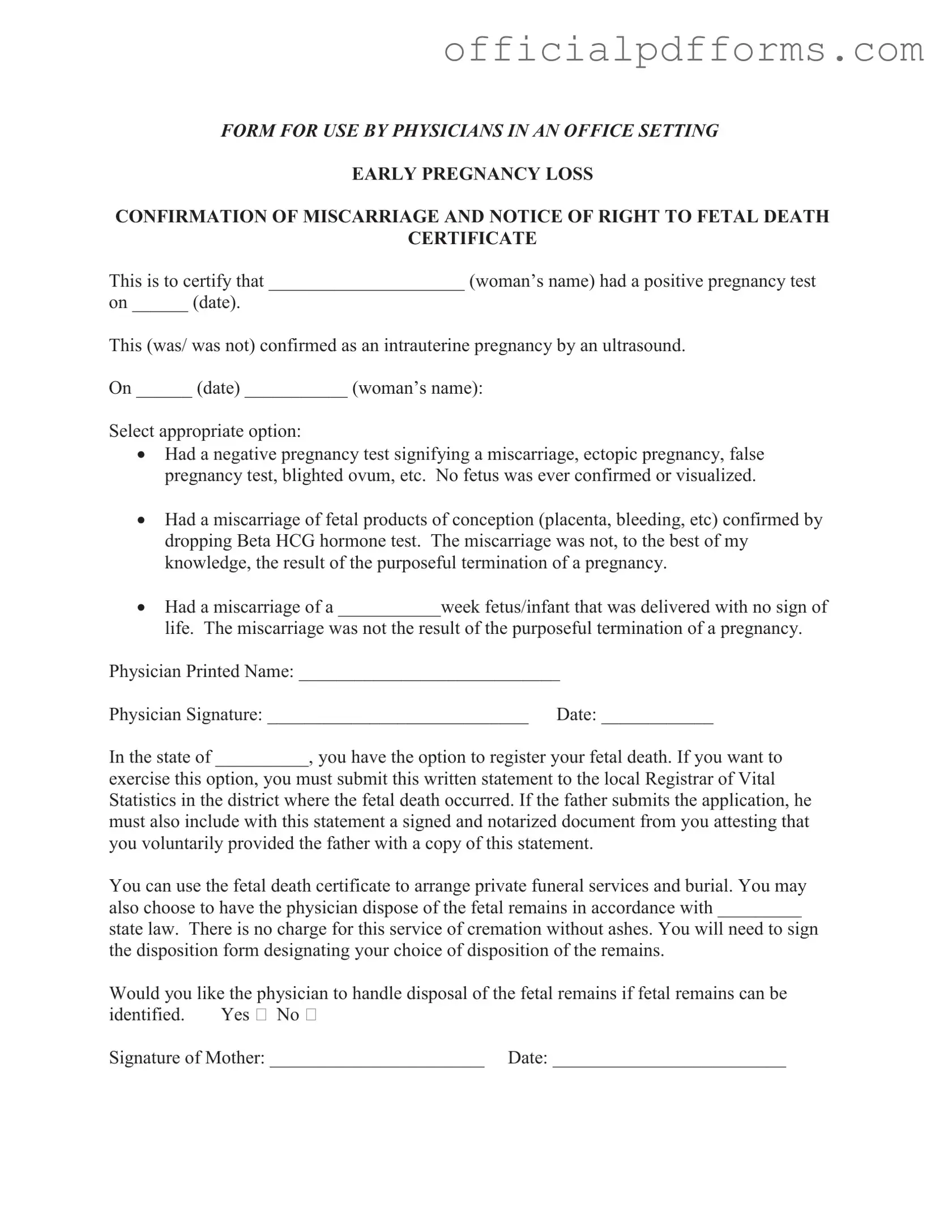The Miscarriage Discharge Paper form serves to officially document the occurrence of a miscarriage. It is used by physicians in an office setting to confirm the loss of pregnancy and to provide necessary information regarding the fetal death certificate. This form ensures that the mother is informed of her rights and options following this difficult experience, including the possibility of registering the fetal death and arranging for proper disposition of the remains.
The form includes several key pieces of information:
-
The woman's name and the date of her positive pregnancy test.
-
Confirmation of whether the pregnancy was verified through an ultrasound.
-
A selection of options regarding the nature of the miscarriage, including details about the pregnancy and the fetal remains.
-
The physician's printed name and signature, along with the date of completion.
This information is crucial for both medical records and for any legal processes that may follow.
What are the options for handling fetal remains?
Parents have a few options when it comes to the handling of fetal remains. They can choose to:
-
Have the physician dispose of the remains in accordance with state law, which may include cremation without ashes at no charge.
-
Arrange for private funeral services and burial.
It is important for the mother to indicate her preference by signing the disposition form, which designates how she wishes the remains to be handled.
How can I register the fetal death?
In the state where the miscarriage occurred, parents have the option to register the fetal death. To do this, the mother must submit the completed Miscarriage Discharge Paper form to the local Registrar of Vital Statistics. If the father is submitting the application, he must include a signed and notarized document from the mother, confirming that she provided him with a copy of the statement. This process allows for formal recognition of the loss and can be an important step in the grieving process.
If you have additional questions or concerns regarding the Miscarriage Discharge Paper form, it is advisable to reach out to your healthcare provider. They can provide guidance and support, ensuring that you understand your options and the implications of the form. Additionally, they may help you navigate the emotional aspects of this experience, as it can be a profoundly difficult time.
